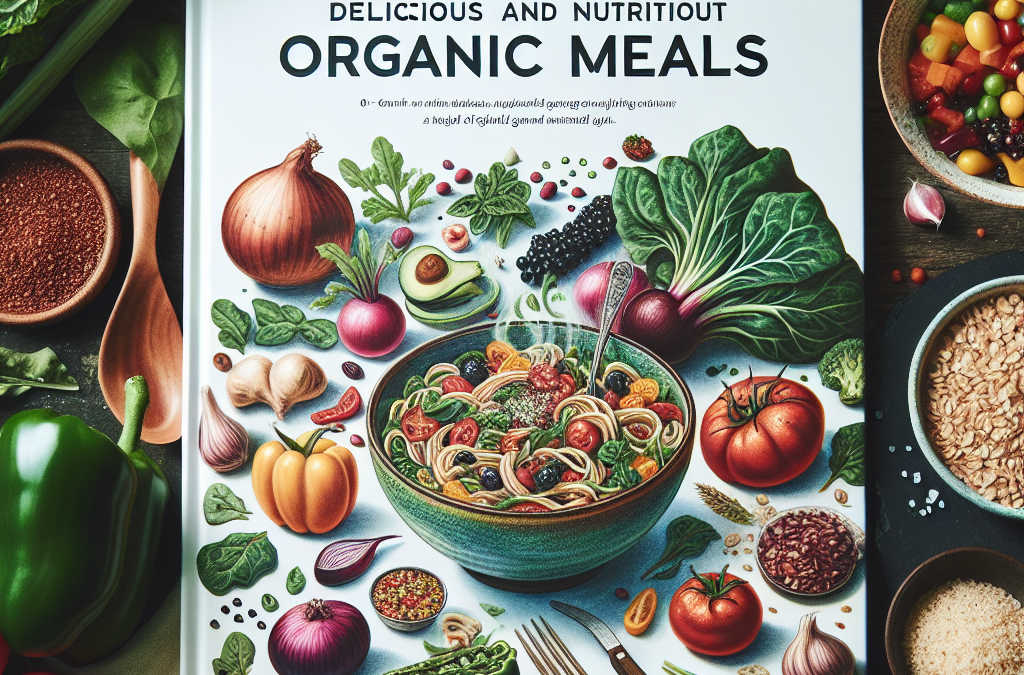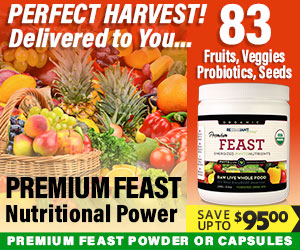Selecting Fresh Organic Ingredients
Understanding Organic Labels
So, when I first jumped into the organic food world, I was shocked at all the labels popping up everywhere! It became clear that not all labels are created equal. To start selecting the best ingredients, it’s crucial to understand what “organic” really means. Essentially, it means that the food has been produced without the use of synthetic fertilizers and pesticides, which sounds great, right?
But hold up! There’s more. Look out for specific certifications. The USDA Organic label is your gold standard in the U.S. If you see that seal, you know you’re getting food that’s up to snuff. But then there are other labels, like “all-natural,” which can be super misleading. Trust me, diving into labels can feel like a maze, but it’s essential to ensure you’re getting high-quality organic goodies.
Also, checking local farmers’ markets can be a game changer! Many local producers use organic practices, and they can tell you everything about their produce. Plus, it just feels good to support your community and enjoy ingredients that are in season.
Choosing Seasonal Produce
Next up, let’s talk about seasonal produce. I can’t even express how much better my meals tasted once I started eating with the seasons. Seasonal fruits and veggies not only provide better flavor, but they’re often cheaper and packed with nutrients. If you’re curious about what’s in season, there’s usually a handy calendar available online or at your local market.
When I first started, I had no idea how much a difference seasonal eating could make. The freshness of summer tomatoes versus winter ones is like night and day! You’ll want to experiment with recipes based on what’s ripe and available. It can take your cooking to a whole new level, and you’ll impress everyone with your knowledge of local produce.
Also, I’ve found that seasonal eating makes grocery shopping way more exciting. Each month, there’s something new to try, which keeps my meals diverse and interesting. It makes meal planning a fun challenge rather than a chore.
Building Relationships with Local Farmers
Let’s talk relationships—I’m talking about relationships with local farmers. Buying directly from them not only gives you access to fresher ingredients but also fosters a sense of community. I always find it interesting to talk to the people who grow my food; they have incredible stories and insights!
Don’t be shy! Ask questions about how they grow their crops or what inspired them to farm. Many farmers are happy to share their experiences, and you might even score some cooking tips or recommended recipes for the unique produce they offer.
Plus, getting to know your farmers can lead to some awesome surprises. They might share when their best harvests are coming up or offer special deals on bulk purchases. It’s all about making those connections and enjoying the fruits (literally!) of your labor!
Creating Balanced Meals
Understanding Macronutrients
Now that we’ve got some fresh ingredients, it’s time to dive into meal balance. Understanding macronutrients—carbs, protein, and fats—is key to whipping up meals that are not only tasty but nutritious, too. At first, I thought it was all about counting calories. But honestly, I found it more beneficial to think about what my plate looks like.
I like to aim for a balance: half of my plate filled with fruits and vegetables, a quarter with proteins, and a quarter with healthy carbs. This breakdown has helped me feel satisfied, energized, and has made my meals visually appealing too! Seriously, who doesn’t love a colorful plate?
Don’t forget about healthy fats, like avocados and nuts, either. They can elevate flavor and help you feel full. Balancing your meals doesn’t have to be a struggle; it just takes a bit of planning and a little bit of practice!
Meal Prepping for Success
Let’s get real about meal prepping. I started meal prepping a few years ago, and now I can’t imagine my life without it. It’s about carving out a few hours of your week to plan and prepare meals ahead of time. This approach saves me so much time and stress during the week. Seriously, it’s a lifesaver on busy nights!
When prepping, I often cook larger batches of grains, proteins, and roasted veggies, then mix and match them throughout the week. This method really keeps things fresh without losing my mind in the kitchen every single night. Plus, with the best organic ingredients, I can trust what I’m putting into my body!
Meal prepping also helps keep portion sizes in check. I love being able to grab a ready-made meal from the fridge and not worry about whether I’m over or under eating. It’s all about allowing myself some freedom when it comes to food while keeping it balanced and healthy.
Using Flavorful Herbs and Spices
One of my absolute favorite hacks for creating delicious organic meals is maximizing the use of herbs and spices! Trust me, a sprinkle of fresh herbs or a pinch of the right spice can completely transform a dish. I’ve invested in a small spice rack and a couple of herb pots, and it’s been totally worth it!
Get Certified Organic Whole Food Nutrition – Nutrient Dense Supplement
Experimenting with different herbs really brings your dishes to life. For instance, basil and cilantro add such a fresh punch, while cumin can bring warmth and depth. Start small, and try adding new ones to your favorite recipes. You’ll be amazed at how just a little bit can elevate your meal from good to wow!
Also, don’t forget about the health benefits of herbs. Many have antioxidant and anti-inflammatory properties. You’re not just improving flavor; you’re also boosting nutrition. It’s a win-win situation!
Cooking Methods that Retain Nutrition
Healthy Cooking Techniques
Let’s chat about cooking methods because how you prepare your food matters just as much as what you put in it. I used to resort to frying everything, thinking that was the only way to get flavor. But as I’ve learned more about healthy cooking techniques, I can now create delicious meals without drowning everything in oil.
Methods such as steaming, roasting, and grilling often help retain nutrients and enhance flavors without the need for excess fat. I find that roasted veggies have this amazing sweetness that comes out, and grilling adds a great smokiness to proteins. Just little tweaks have made such a difference in my meals.
Don’t forget about using water or broth for sauteing your veggies instead of oil. You’ll keep your meals lighter and still full of flavor. Healthy doesn’t have to mean boring; it’s all about finding the right methods that work for you!
Choosing the Right Kitchen Tools
Having the right kitchen tools is also essential for making the cooking process easier and more enjoyable. I started investing in good-quality kitchen gadgets that help me prepare organic meals with ease. A good knife can change everything; it makes chopping veggies so much more enjoyable!
Additionally, using tools like a steamer or slow cooker can help simplify the process. They require less active cooking time, and you can simply throw in your ingredients and let them cook while you focus on other things or enjoy some relaxation time.
Having the right tools at hand makes preparing nutritious meals feel less daunting. I love creating an environment in my kitchen that inspires me to whip up something delicious and healthy!
Mindful Cooking and Eating
Last but not least, let’s talk about mindfulness in cooking and eating. This was a big game changer for me. Once I learned to slow down and really appreciate the process of cooking—smelling the herbs, seeing the vibrant colors of the ingredients—I found more joy in it. It became less of a chore and more of a beautiful ritual.
Even when it comes to eating, I practice gratitude for my food. Taking a moment to savor each bite and appreciate the nourishment it brings transforms meals from just happened to something I genuinely enjoy. I’ve noticed that being mindful helps me listen to my body and respond to my hunger cues better.
Mindful eating isn’t just about the food itself; it extends to creating a pleasant atmosphere. I’ll light a candle or play some music while I eat, which makes the experience even more delightful. It’s all part of truly enjoying the fruits of your labor.
Frequently Asked Questions
1. What are some easy organic meals for beginners?
Great question! Some easy organic meals to start with include vegetable stir-fries, grain bowls with fresh vegetables and protein, and hearty soups. All you need are good ingredients and a few basic cooking techniques!
2. How can I ensure I’m eating a balanced organic diet?
To balance your diet, my biggest tip is to include a variety of fruits, vegetables, proteins, and healthy fats in every meal. Aim for a colorful plate, and don’t forget to experiment with herbs and spices for flavor!
3. Are there any specific organic brands you recommend?
It really depends on personal preference and location, but some well-known organic brands include Annie’s for snacks, Nature’s Path for cereals, and Organic Valley for dairy. Always check for local options, too; they often have the freshest selections!
4. How do I store fresh herbs for future use?
Storing fresh herbs can be simple! You can keep them in a glass of water in the fridge, like cut flowers. Alternatively, try freezing them in ice cube trays with a little olive oil. This way, they’ll be ready for you when you need them!
5. Can I really afford to eat all organic foods?
Eating organic can seem pricey, but there are ways to make it more budget-friendly. Consider buying in bulk, shopping at local farmers’ markets, or prioritizing the “Dirty Dozen” list to know which fruits and veggies are best to buy organic.
Get Certified Organic Whole Food Nutrition – Nutrient Dense Supplement
Related Content
- Best Organic Spice Shops Near Me in Pass a Grille Beach, Florida 33706
- Best Local Organic Baking Supplies in Hendricks, West Virginia 26271
- 10 Effective probiotic foods to eat in 2025: The Ultimate Guide to Boost Your Gut Health
- 10 Effective Tips for Organic Fermented Vegetables in 2025
- Best Organic Immune Support in Belton South Carolina




